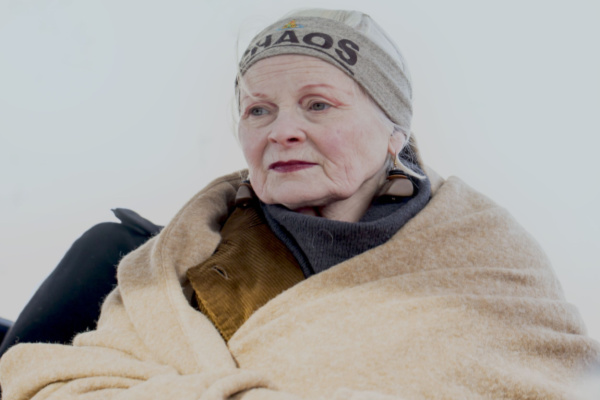Dame Vivienne Westwood passed away “peacefully and surrounded by her family” on December 29 at the age of 81 in Clapham, South London, according to a statement from her brand’s Twitter.
Completely self-taught as a designer, Westwood was a legendary leader in womenswear and was considered to have spearheaded the punk movement in fashion in the late 1970s for her work with the Sex Pistols, which first launched her into the fashion spotlight. And to her very last day, Westwood served as the head designer of her namesake label.
After studying at the University of Westminster, Westwood opened her famed boutique located in the Chelsea area of London in 1971, later renaming it SEX, with the slogan: “Rubberwear for the office.” The punk style for which Westwood became known in the 1970s was born out of her relationship with Malcolm McLaren, her partner at the time. Westwood said years later that she didn’t want to be a designer but made clothes out of necessity in her teens and when she was asked by McLaren to outfit the new band he was managing, the Sex Pistols.
As CNN reports, the Sex Pistols’ history is intertwined with Westwood’s King’s Road SEX boutique. It was there that Westwood sold handmade festish clothing and employed burgeoning fashion iconoclasts like Jordan and musicians like Chrissie Hynde of The Pretenders. It’s also where Pistols guitarist Steve Jones and friends hung out and where the band auditioned a green-haired outcast named John Lydon, better known to many as Johnny Rotten, as its lead singer.
Westwood and McLaren’s views influenced what the Pistols wrote, and Westwood designed clothes that mirrored the band’s anarchist sensibilities. When the Sex Pistols’ single “God Save the Queen” was banned from British radio, Westwood renamed her shop “Seditionaries” and outfitted the band in her provocative designs, which included a distressed muslin top emblazoned with Queen Elizabeth II’s portrait and the infamous “Destroy” T-shirt that featured a swastika and an upside down crucified Jesus.
Westwood’s clothes during this era were intentionally challenging and abrasive, made to comment on conservative ideals and a lack of social progress. Westwood wanted to provoke young punks into political action, she said, and she believed her clothes represented her own radical views during the ’70s. Her designs were meant to “confront the status quo,” she said, and encourage others to do the same.
With all of her historical importance in both fashion and societal activism, it was in the 1990s that her name really gained traction amongst top members of the fashion industry. The Fall 1993 “Anglomania” collection — arguably her most famous — solidified her designs in the public consciousness. It was during this period that Westwood became best known for the re-popularization of the corset in fashion, introducing the piece as a form of outerwear rather than underwear.
Many of Westwood’s designs were similarly inspired by historical artifacts: In the 2009 documentary “Why I Love the Wallace,” Westwood said, “All my ideas come from studying the ideas of the past. There’s a link between art and fashion. I couldn’t design a thing if I didn’t look at art.”
As Fashionista reports, over the course of her career, Westwood also used her platform to raise awareness around a variety of social and environmental issues, often protesting herself. In 2012, the designer launched Climate Revolution, a campaign dedicated to combating climate change and over-consumption.
According to an official announcement from the brand, a new nonprofit dubbed The Vivienne Foundation will launch to “honour, protect and continue the legacy of Vivienne’s life, design activism” next year. It will focus specifically on four pillars: “Climate Change, Stop War, Defend Human Rights and Protest Capitalism.” Westwood herself was involved in the organization’s development, alongside her sons and grandaughter.
The brand also shared that Westwood considered herself a Taoist, including this quote from her: “There was never more need for the Tao today. Tao gives you a feeling that you belong to the cosmos and gives purpose to your life; it gives you such a sense of identity and strength to know you’re living the life you can live and therefore ought to be living: make full use of your character and full use of your life on earth.”
If one thing’s for certain, it’s that Westwood exceeded her mission of making full use of her time on earth. As her work continues to reach new audiences, she’ll continue to be remembered for her incredible contributions to the world through activism and fashion.
—
Photo Credit: Ms Jane Campbell / Shutterstock.com
